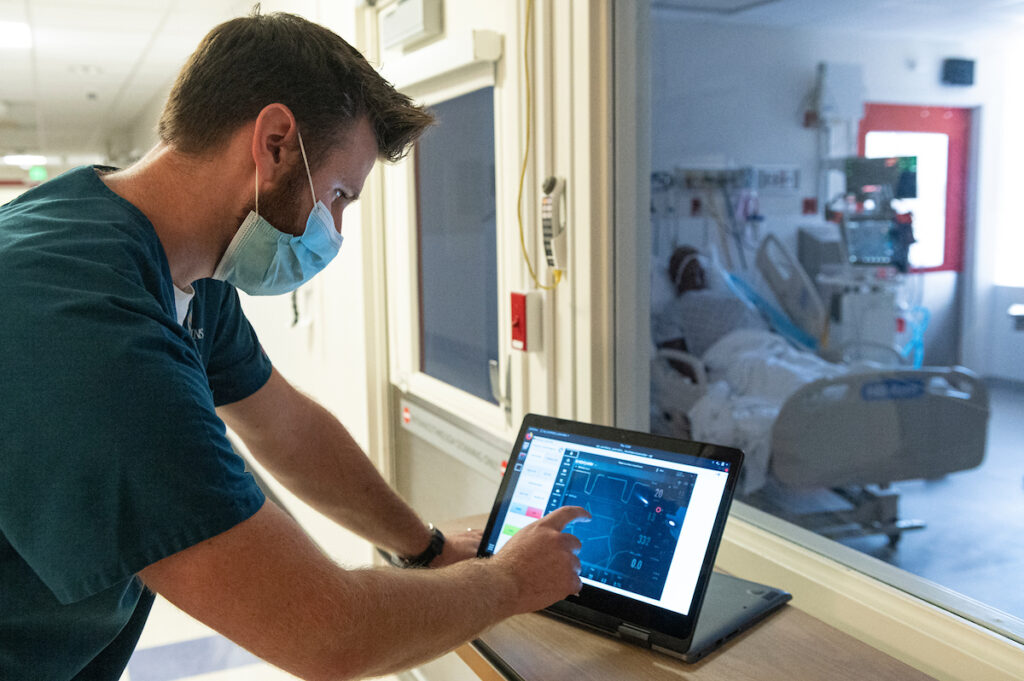Image: Johns Hopkins respiratory therapist Jonathan Cope tests a robot that adjusts ventilator settings while being controlled via a tablet from outside the patient’s room in order to avoid unnecessary patient contact. (Will Kirk/Johns Hopkins University)
Robots often take on tasks too risky for humans to perform, such as cleaning up radioactive waste or replacing responders in dangerous search and rescue missions. The global pandemic is no exception. Robots are being used to perform tasks that would normally put health care workers at risk of infection; in hospitals, robotic systems are helping staff to deliver food and supplies, disinfect equipment, and manage ICU ventilators.
Still, even with robots on the front lines of COVID-19, there are several barriers to wide-scale robot deployment during infectious disease emergencies. To prepare for the next pandemic and perhaps aid in the current one, a virtual workshop entitled “The Role of Robotics in Infectious Disease Crises” was co-hosted by the National Academy of Engineering (NAE) and the Computing Community Consortium (CCC).
Held on July 9-10, the workshop sought to identify the major challenges and opportunities for responsible robotics innovation in future emergencies.
More than forty people participated in the discussions, including engineers, clinicians, critical care workers, public health and safety experts, and emergency responders. Johns Hopkins computer scientists Russell Taylor and Greg Hager chaired the workshop, along with robotics experts from MIT, University of Pennsylvania, and Texas A&M University.
“A major challenge is that these robots will be required to operate in unstructured environments like busy ICU units, and that can require a significant level of situational awareness and autonomy. As technical capabilities continue to advance, robotic systems could play a much more substantial role in future crises, especially if an appropriate national strategy can be developed and implemented now,” said Taylor.
Released in October, the workshop report presents a roadmap for increasing national preparedness to use robotic systems and technology more effectively in times of crisis, which includes:
- identify key challenges faced by health care responders and the general population
- examine robotic/technological responses to these challenges
- identify key research/knowledge barriers that need to be addressed in developing effective, scalable solutions
- identify workforce training, regulatory, and infrastructure needs that should be addressed in order to enable rapid deployment of these systems
- suggest follow-on steps to more fully develop and implement this strategy
In addition to these recommendations, the report offers many examples of how highly capable robotic systems can help meet clinical care and public health challenges such as those posed by the current pandemic. For example, the demand for home health care is increasing because people are worried about leaving home. This suggests a tremendous opportunity for home care robots, which can provide care as well as companionship to alleviate the effects of isolation and distancing.
As noted in the report, every disaster presents new twists or unforeseen challenges, as evident with COVID-19. Thus, any robotic solution must be highly adaptable so that it can be ready for situations as they arise. Continuing advances in rapid prototyping, sensing, machine vision, and artificial intelligence will further increase this adaptability in the years to come.
The full report is available here.
Read the Overview summary from CCC.
